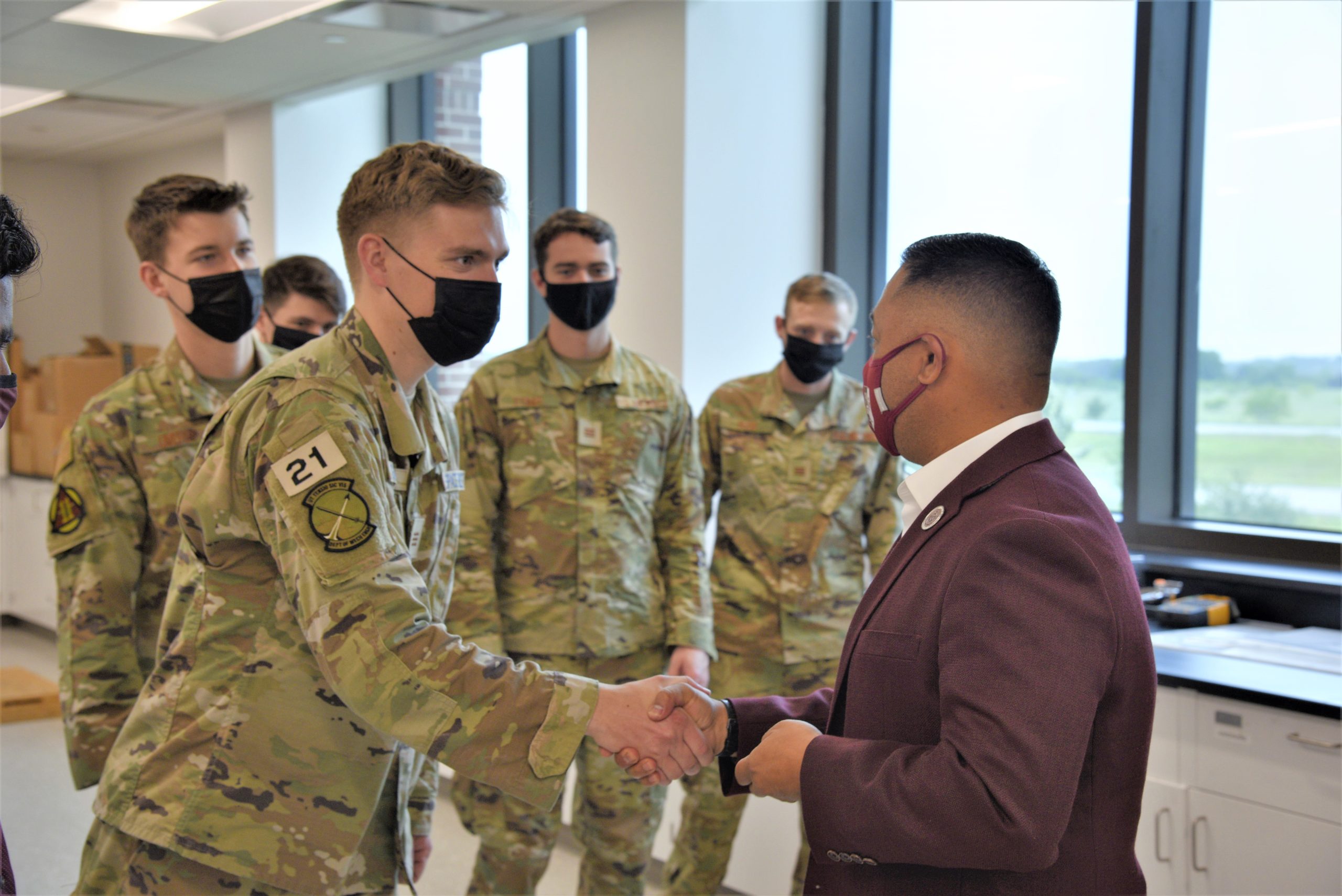
An engineering team of cadets from the United States Air Force Academy (USAFA) traveled to Texas A&M University recently to test their senior capstone design project with the two-stage light gas gun in the Texas A&M Engineering Experiment Station’s (TEES) Hypervelocity Impacts Laboratory (HVIL).
For their project, the cadet team was given a problem to solve by their sponsor, Made In Space, Inc.
“Made In Space, they’re kind of the pioneers for 3D printing on orbit, and the project they gave to us was to use 3D printing to do something – it was broad,” said Cadet Kaleb Overby, USAFA. “So we brainstormed and thought that one of the big issues in space now is there’s so much debris floating around, and a satellite is so expensive, if that gets damaged or something impacts it, that’s a lot of money out the window and you can’t go fix it.”
The cadets decided to base their project on making satellites more durable and resilient and design shields that can be 3D printed on orbit, and got started brainstorming right away.
When the team came up with their design idea, Jason Niebuhr, the mechanical engineering capstone team’s advisor at USAFA, came up with his own plan for how they could test the designs down the road. Niebuhr contacted a former professor of his at Wichita State University, Dr. Thomas Lacy, now a professor in Texas A&M’s J. Mike Walker ’66 Department of Mechanical Engineering and principal investigator of the HVIL.
“Jason contacted me back in January expressing an interest in hypervelocity impacts and told me about the cadet design team and their capstone project,” Lacy said, “We agreed to work together then; it was a fantastic fit.”
After the connection was made, the cadet team had a way to test their projects on micrometeoroid protection for satellites on orbit, to leverage 3D printing on orbit to make shielding for space vehicles and started the collaboration with the HVIL team.
“So we are here to test some of those final concepts that have been refined from the get-go. We are pretty excited to see how they perform. We are looking forward to some successful tests today,” Niebuhr said. “The cadets have been working on several different concepts since the fall and progressively more detailed concepts as they’ve gone along and learned lessons from each of their previous attempts to improve what they’re learning and what they’re doing.”
Overby said they started the design project searching for someone to help them out to test the durability of their designs.
“Once we had Dr. Lacy and his team on board, we were really excited and sped up our design because being able to come to Texas A&M has been a huge benefit for us. It is extremely important for our project,” he said.
Cadet Jon Gabriel, USAFA, explained the team’s brainstorming process and how the designs changed over time to end up at Texas A&M performing the tests.
“We brought two of the optimized shields that we designed to test here. We started the project with just a ¼-inch plate of the 3D-printed plastic,” Gabriel said. “And from that data, we were able to design a shield and think about how it would best be able to stop a piece of orbital debris, how can we minimize weight, volume, things like that.”
Gabriel added that their designs held up better than expected in the HVIL.
“I think everyone on the team was pleasantly surprised with how well the plastic shields held up against the light-gas gun because we cut down the weight and thickness a lot right before flying to Texas to test them,” he said.
Lacy is also the Principal Investigator for the George H.W. Bush Combat Development Complex’s (BCDC) Materials for Extreme Environments technology area. The HVIL is instrumental is BCDC’s hypervelocity impacts research to further the military’s goals of national security, which Overby said is the ultimate goal for their satellite shielding, as well.
While Gabriel and Overby will be graduating from the USAFA this month and heading to the next steps in their careers – the United States Space Force – Niebuhr wants to continue the USAFA and Texas A&M collaborations for future capstone teams.
“Collaboration is important in any stage of engineering, but it is clear here,” he said. “We have the cadets who are working on a design project and the Hypervelocity Impacts Lab here at A&M is unlike anything we have for them to test their concepts.
“So to do be able to make that connection, to have the cradle-to-grave project for them is critical for their learning,” Niebuhr added. “And I think long term, we will continue to collaborate.”


